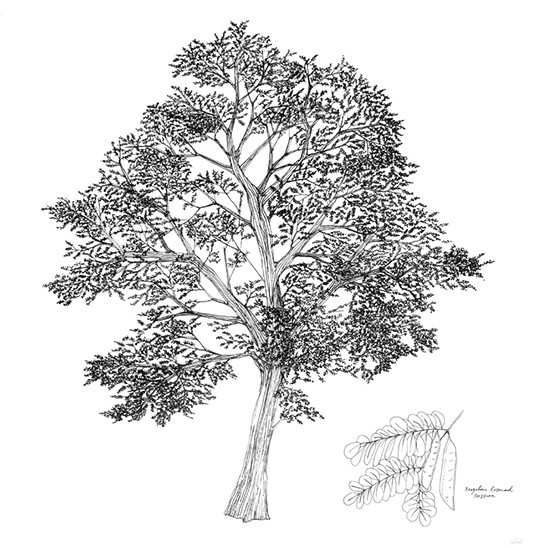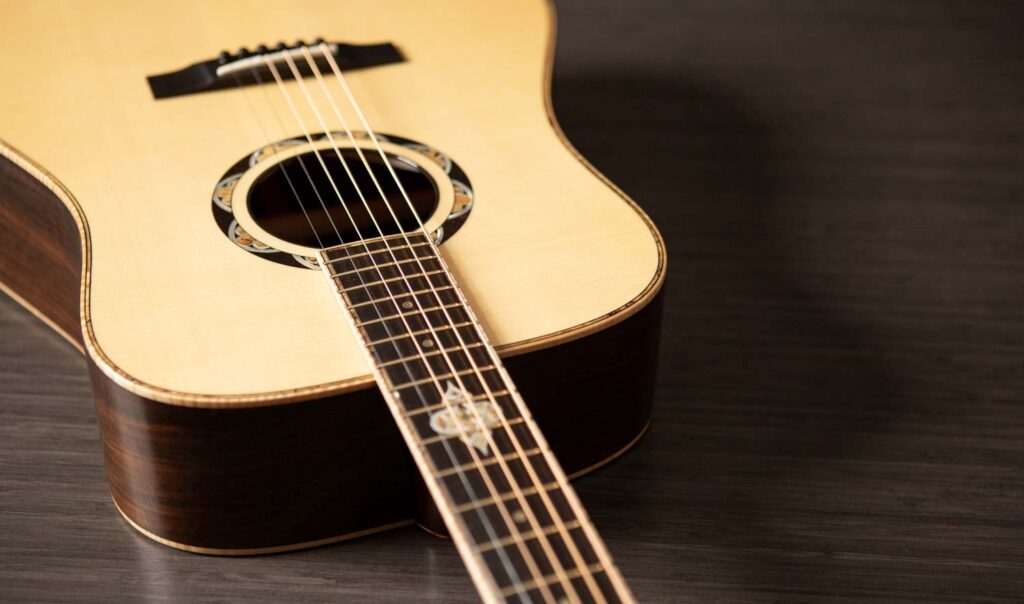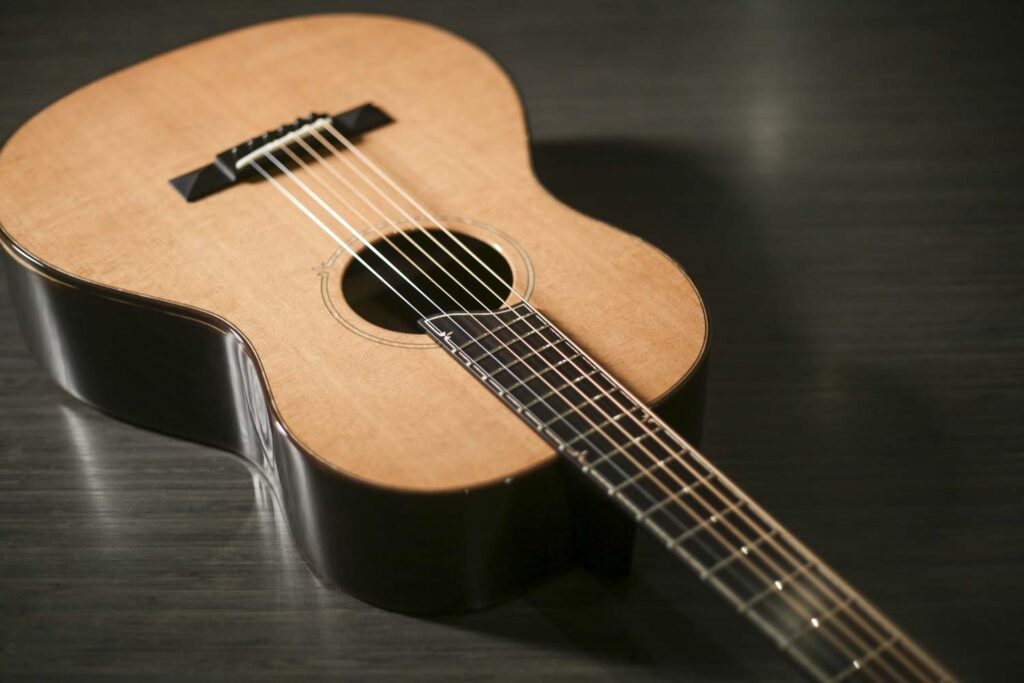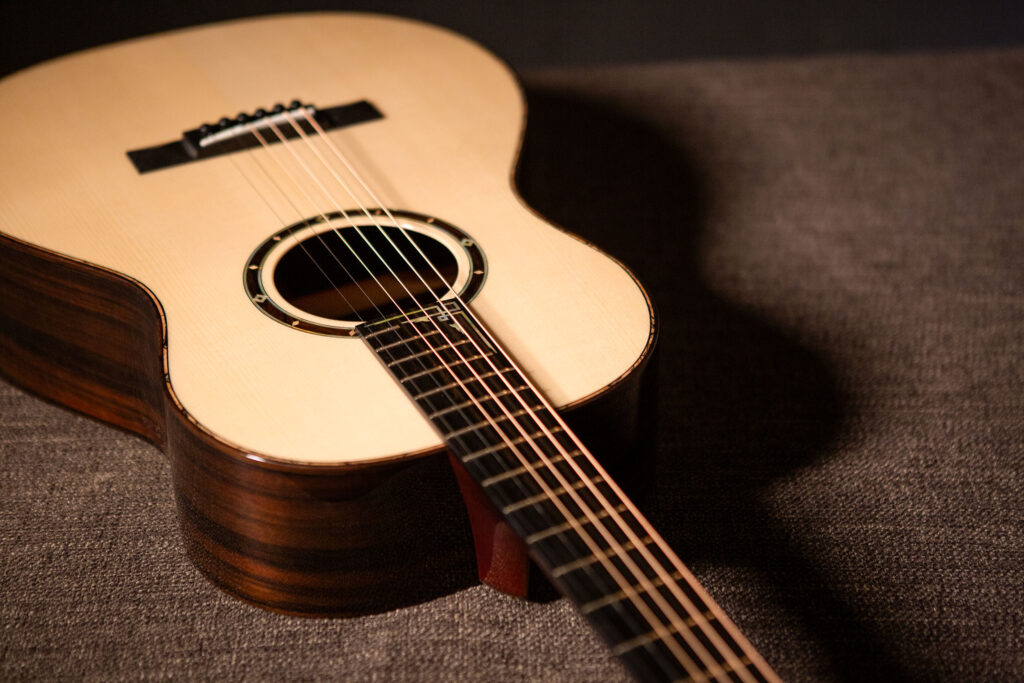Brazilian Rosewood

An endangered and carefully protected species, Brazilian rosewood (Dalbergia nigra) is the most precious of tonewoods. Simply called “rio” by Brazilians, it is highly regarded among luthiers and collectors for its magical tonal character and deep, rich beauty – and it is vigorously regulated; it is protected with the same level of regulation as ivory. Brazil – recognizing the value of its rosewood trees – outlawed the exportation of Brazilian rosewood logs in the late ‘60s. The ban was a blow to luthiers and guitar manufacturers worldwide, since it was widely believed that there was no better combination for acoustic guitars than Brazilian rosewood paired with spruce. From that point onward, fewer and fewer players would have the chance to own a Brazilian rosewood guitar, and most would have to settle for other rosewood substitutes… and if you’ve ever played an acoustic guitar crafted from Brazilian rosewood, you know there is no substitute.
In June of 1992, Dalbergia nigra was listed in Appendix I of CITES as an endangered species, preventing the import and export of the precious tonewood within 180 member nations, including all of Europe. Fortunately, years before the ‘60s Brazilian ban and decades before CITES, the trees that live again in the magnificent Bedell guitars were already safely resting and patiently aging in Spain.
In May of 2001, Brazilian law made it illegal to harvest Brazilian rosewood in the wild, effectively limiting the supply to existing stocks. And since import and export of the wood is severely restricted by 1992 CITES convention, it is incredibly difficult to find pre-Convention Brazilian rosewood for acoustic instruments that will allow for travel across international borders. As a result of these rigorous regulations, when the existing finite and scarce Brazilian tonewood supply is exhausted… the “rio” is gone forever.
Brazilian rosewood produces a loud, warm, rich tone, with full deep bases, brilliant trebles, delivering excellent sustain and clarity. Its appearance varies from brick red and burnt orange to shades of dark brown to violet color with black spidery streaks.
CONSERVATION OF BRAZIL’S ATLANTIC FOREST
The Atlantic Forest of Brazil (also known as the Mata Atlântica or the Atlantic Rainforest) is critically threatened. More than 85% of the original forest has been destroyed, however, Mata Atlântica still remains one of the richest, most biologically diverse forests, and is home to a large number of species that can be found nowhere else on the planet. Major threats to Mata Atlântica include illegal logging, conversion of forestland to agricultural uses, and urban and suburban development. Brazil’s eastern seaboard is home to 70% of Brazil’s population, so the fate of the forest flora and fauna is interwoven with economic wellbeing of the local population. Currently, less than 2% of the whole biome is under protected status.
To learn more about the status of the Atlantic Forests, visit:
Take Action:






